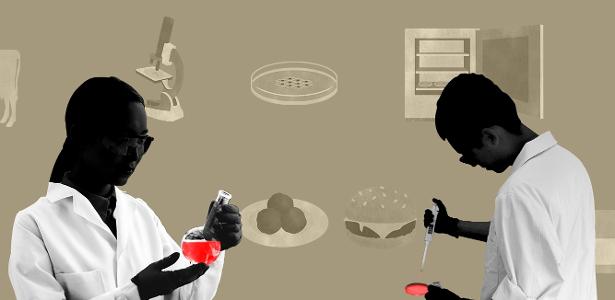
The results have been widely successful, as fat, connective tissue and bone cells clump together into a monolayer and a sphere. For muscle, the desired form of assembly is the myotube, where cells are grouped together to form long tubular strands, like muscle fibers found in meat. This form of cell assembly is thought to be physically more resistant than monolayer cells, which will leave cultured meat with an appearance and texture closer to conventional meat.
“Protocols are determined by each researcher, and many steps and information are left confidential. So each research group determines what they will test, and as we move forward in the project, new paths open up and we have to choose a path in a world of possibilities,” comments Karen Silveira, MA student. Post Ph.D. who joined Embrapa about a month ago.
When designing the methodology, the scientist specifies several steps that must be carried out, and the experiment does not always consist of continuous actions. In many cases, when a test does not produce satisfactory results and there is enough time and the possibility of repeating it by changing variables, the team reruns the experiment and compares the results. In the case of cultured meat, there are many variables in the composition of the culture medium, such as the percentage of growth factor, hormone, and glucose, with or without fetal bovine serum. Each of these groups of elements will affect the speed of animal cell reproduction and nutrition, which may give more satisfactory results for a particular cell type.
The GFI-funded Embrapa project envisages the production of cultured chicken meat with a structure similar to muscle, i.e. forming cells into a specific shape using support. To this end, tests have begun based on the results of research conducted by Carla Oliveira, from the Federal University of Santa Catarina, on cellulose nanobacteria, a film resembling a Kombucha SCOBY. By producing this material, they developed a scaffold with dimensions similar to those of sasami (7.5 cm x 5 cm x 1 cm), without an obvious flavour.
“The scaffold was produced in bottles and it took two to three weeks for it to be ready. At some point, even without changing the conditions in the laboratory or in the feed, the bacteria stopped producing. So, without explanation. These things happen when if you're doing experiments on… Living organisms,” says Vivian Federn, project coordinator.
The bacterial structure forms a hollow cavity that allowed the researchers to inject a mixture of fat, connective tissue and bone cells to see how they attach to the scaffold. In February, when I was at Embrapa, the researchers had not yet run the experiment including muscle cells.

“Friendly zombie guru. Avid pop culture scholar. Freelance travel geek. Wannabe troublemaker. Coffee specialist.”






